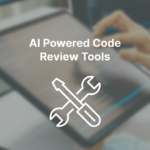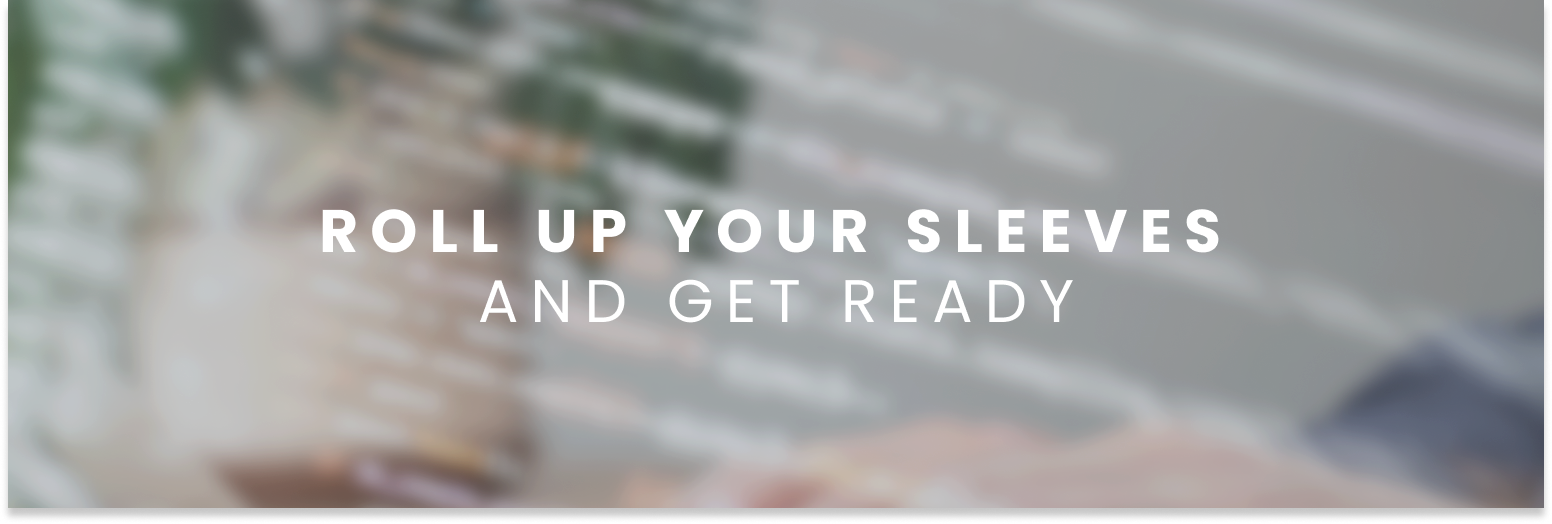7 AI Powered Code Review Tools: Get Top-notch Code Quality
What’s the first thing that pops into your mind when you see AI? Probably the semantic behind it comes as complex as the concept is nowadays.
Code-review has been here for a while, but AI made its -sometimes ominous- entrance this year to turn tables. And with it, all the combinations you can think of, such as: AI based code review.
We’ll try to help you unleash its full potential when it comes to using AI for code review. Although its great learning practice in terms of coding skills and soft skills when it comes to give feedback; AI upped the ante this 2023.
What’s the T when in comes to code-reviewing then?
Peer review are a must when coding. It’s one of the best practices that you must never forget or take for granted.
There’s a plethora of benefits, not only does it help to self-assess your skills but it also enables you to boost somebody’s work, collaborating with your team.
Let’s go over some renowned reasons why code review is a must:
- Enhancing Code Quality. It identifies and addresses potential issues, bugs, and vulnerabilities in the codebase. It ensures that the code follows best practices, coding standards, and guidelines, leading to higher code quality.
- Bug Detection and Prevention: identifies bugs and errors early in the development process. Meaning that this practice is also embedded in an agile framework.
- Knowledge Sharing and Collaboration: it encourages collaboration providing an opportunity for you and your team to learn from each other. It fosters a culture of continuous learning and development.
- Consistency and Maintainability: it ensures a consistent code across the codebase. It helps maintain a standardized style, making communication channels easier to understand.
- Security and Vulnerability Mitigation: it plays a crucial role in identifying security vulnerabilities and ensuring that the code is secure.
It helps spot potential security loopholes, such as SQL injections, cross-site scripting (XSS) attacks, or improper data validation.
- Quality Assurance: Code review acts as a quality assurance mechanism. It reduces the likelihood of introducing regressions or breaking existing functionality by catching potential issues before they impact the end-users.
There’re plenty of tools to use, but if you need a hand, please contact us!
What’s the deal with AI powered code review then?
https://www.youtube.com/watch?v=AEY7j1DzZVc
Dive deep into AI code review
It requires the use of top-tech and algorithms to automatically review code so as to identifying bugs, enforcing coding standards, improving code quality, and detecting security vulnerabilities.
You’ll find underlying cutting-edge technologies and algorithms commonly used in AI:
Static Code Analysis is a technique that examines source code without executing it. It involves parsing the code. Various algorithms, such as data & control flow analysis and pattern matching are employed through:
- Lexical Analysis: The code is broken down into individual tokens, such as keywords, identifiers, operators, and literals. This step involves removing comments and whitespace and categorizing the tokens.
- Syntax Analysis: The tokens are analyzed to determine if they form valid syntax according to the programming language’s grammar rules. It checks correct syntax, balanced parentheses, proper use of semicolons, etc.
- Semantic Analysis: The code’s semantics are examined to ensure it follows the language’s rules and conventions. It spots undeclared variables, type mismatches, unreachable code, or incorrect function calls.
- Rule-Based Analysis: By applying predefined rules or heuristics it detects specific coding patterns or practices. Covering a wide range of coding issues, such as code smells, anti-patterns, or potential performance bottlenecks.
Let’s talk from a scientific framework in engineering for ai code review github:
- TSLint is a static analysis tool for TypeScript that checks for coding style and potential errors.
It provides a set of predefined rules that can be configured according to project requirements. For example, it can detect unused variables, missing type annotations, or incorrect function overloads.
- PMD is a static analysis tool for various programming languages, including Java.
It uses a rule-based approach to identify potential issues in the code. For instance, it can detect empty catch blocks, unused methods or variables, or inefficient string concatenation.
Machine Learning techniques are frequently used in AI code review to train models that can automatically detect patterns, anomalies, and potential issues in code.
Supervised learning algorithms, such as decision trees, random forests, or support vector machines, can be trained on labeled datasets to classify code segments as either correct or problematic.
Unsupervised learning algorithms, like clustering or anomaly detection, can be used to identify patterns or outliers in the code.
Deep Learning is a subset of machine learning, it involves the use of artificial neural networks with multiple layers to learn complex patterns and representations.
In AI code review, deep learning models can be trained on large code repositories to capture intricate relationships and dependencies within the code.
Natural Language Processing (NLP) is applied in AI code review to understand and analyze the textual components of code, such as comments, documentation, or commit messages.
NLP algorithms can be used to extract meaningful information from these textual elements, perform sentiment analysis, identify code intent, or detect code documentation gaps.
Code Metrics and Heuristics: Metrics, such as cyclomatic complexity, code duplication, or code coverage, provide quantitative measures of code quality.
Heuristics, on the other hand, are predefined rules or guidelines that check for specific code patterns or practices, such as naming conventions, proper exception handling, or security vulnerabilities.
Pattern Matching and Rule-Based Systems it comes in handy to identify specific code patterns, anti-patterns, or known issues.
Regular expressions, abstract syntax tree pattern matching, or rule-based engines can be used to define and apply such patterns or rules to analyze the code.
Data Mining and Big Data Analysis: AI code review can leverage data mining and big data analysis techniques to extract insights from large code repositories.
By analyzing massive amounts of code, trends, patterns, and common issues can be identified. This can help in understanding practices, recurring bugs, or improvements based on historical data.
These are just some of the underlying technologies and algorithms used in AI code review. The specific implementation and combination of these techniques depends on the tool or platform being used.
Here you’ll find an example of an improved code quality and consistency:
def calculate_area(radius):
return 3.14 * radius * radius
def calculate_circumference(radius):
return 2 * 3.14 * radius
def calculate_volume(radius, height):
return 3.14 * radius * radius * heightAfter implementing AI code review with ChatGPT:
import math
def calculate_area(radius):
return math.pi * radius * radius
def calculate_circumference(radius):
return 2 * math.pi * radius
def calculate_volume(radius, height):
return math.pi * radius * radius * heightIn this example, the code before the review has inconsistent usage of the mathematical constant pi.
The first two functions use an approximation of pi as 3.14, while the third function uses the correct constant. This inconsistency can lead to errors and confusion.
After AI code review, the code is improved by utilizing the math.pi constant for accuracy and consistency across all functions.
By identifying this inconsistency, the AI code review tools ensure that the code adheres to established coding conventions and best practices, resulting in improved consistency and maintainability.
Faster identification of bugs and security vulnerabilities:
def calculate_average(numbers):
total = 0
count = 0
for num in numbers:
total += num
count += 1
average = total / count
return averageAfter AI Code Review
def calculate_average(numbers):
if len(numbers) == 0:
return 0
total = sum(numbers)
count = len(numbers)
average = total / count
return averageIn this example, the code before AI code review calculates the average of a list of numbers. However, it fails to handle the case where the list is empty, which can lead to a ZeroDivisionError when trying to divide by zero.
After AI code review, the code is improved by adding a check for an empty list. If empty, it returns 0 as the average. This modification prevents the potential bug and ensures a more robust and resilient code.
By quickly identifying the issue and suggesting a fix, it helps developers catch bugs early in the development process, reducing the likelihood of runtime errors.
Here we’ll give you a sneak a peak of some of the tools you can use, nevertheless, bear in mind that this is an on-going tech, adding value day by day. So, keep it up with the latest.
-
- ChatGPT
- Connect Amazon’s CodeGuru to your repo
- Pair programming with an AI tool that suggests code or corrections, integrate it with your IDE.
- IntelliCode
- GitHub CoPilot
- What The Diff
- PMD Code Analyzer
Get ready for some success stories.
Telematic Engineer Pia Rovira, one of our top front-end developers shares her experience.
Basically, it all boils down to seeking improvements for things that I’ve already worked on. I rather rely on my own and team’s skills when it involves information, and creative thinking.
It comes in handy when I need to check code. I copy and paste it in the ChatGPT and ask:
Pia Rovira – Front-End Developer
Let’s call it a day!
AI-powered code review comes as a stay-in trend, stacking up in advances and honing in on everyone’s skills. With its painstakingly analysis, it’s like having a code-savvy companion by your side.
Embrace this cutting-edge technology and unlock the full potential. Stay ahead of the curve, foster innovation, and let AI elevate your code quality to new heights.
Harness the power of AI and unleash your team’s coding prowess like never before. Don’t miss out on this transformative tool—embrace it and witness the seamless fusion of technology and expertise in action.
Your code will thank you, and your software team will thrive in the era of intelligent development.





Leave a Reply
You must be logged in to post a comment.